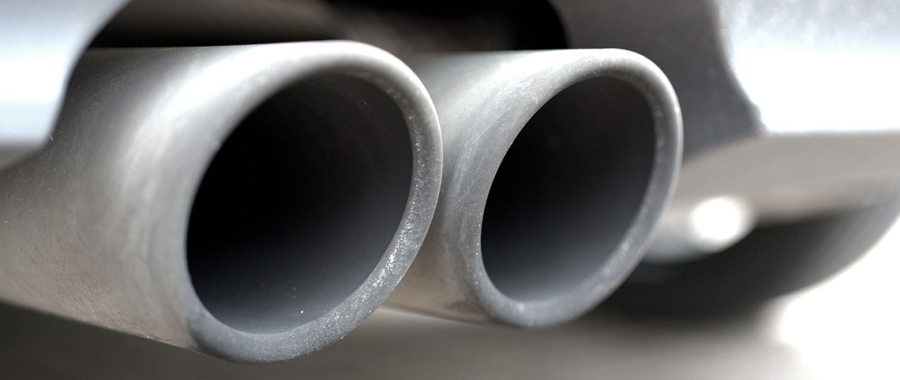Diesel Train Exhaust: Keeping Emissions on Course for Legislative Compliance
SOCOTEC explores why rail operators need to be aware of the hazards of diesel exhaust fumes, and explains the steps they can take to uphold worker health and safety.
With so much of the UK’s rail network still un-electrified, diesel is still a key fuel source in the rail industry. Diesel engines haul passenger services and freight trains, and it is even used to power the mobile generators used in engineering works.
Diesel, however, does have implications for workplace health and safety, particularly when it comes to exhaust fumes from combustion. Given its widespread use in the industry, rail operators need to be aware of the impact of exposure to diesel exhaust emissions in order to take steps to safeguard the wellbeing of their team members.
Understanding diesel exhaust fumes
As stated in the Health and Safety Executive (HSE) publication HSG187: Control of diesel engine exhaust emissions in the workplace, prolonged exposure to diesel exhaust fumes can have a significant impact on worker wellbeing. Particulates, including soot and other components, can irritate the eyes and lungs, causing coughing and breathlessness, and exacerbate the symptoms of asthma and other breathing conditions.
Diesel exhaust fumes also contain oxides of nitrogen and carbon monoxide, which have the potential to pose an acute hazard to worker wellbeing. Some of these compounds are classed as blood poisons and, in high enough concentrations, can quickly starve the body of oxygen, leading to asphyxiation.
Chronic exposure to diesel exhaust fumes can also have a long-term impact on health. Classed as a Category 1 carcinogen by the International Agency for Research on Cancer (IARC), diesel exhaust fumes feature a range of chemicals that can cause cancer, including polycyclic aromatic hydrocarbons (PAHs) and other volatile organic compounds (VOCs). These can be adsorbed into soot particles and, as a result, easily inhaled into the respiratory tract.
Ensuring compliance
With the health effects in mind, it is no surprise that, under the Control of Substances Hazardous to Health (COSHH) Regulations 2002, rail operators and other employers need to do everything in their power to limit workers’ exposure to diesel exhaust fumes. This is particularly important when diesel engines are being run in confined spaces – such as enclosed railway stations, tunnels or inside maintenance depots – as fumes can easily build up, increasing concentrations of hazardous chemicals to unsafe levels.
COSHH does not specify a maximum level of exposure for diesel exhaust fumes in general but, in its EH40/2005 document, does provide workplace exposure limits (WELs) for the individual chemicals that make up the fumes, including carbon monoxide and carbon dioxide.
Air quality tests need to be undertaken regularly to ensure that WELs are not exceeded. Real time testing while the engines are in operation can identify spikes in the levels of combustion gases to help determine whether operators need to take remedial action to improve air quality. Laboratory analysis can also help detect the presence of other compounds that need to be controlled to uphold worker wellbeing.
Taking steps to control exposure
Although the gradual electrification of the UK rail system is reducing the number of diesel-hauled services – helping to lower the risk of exposure to exhaust fumes – such trains are still needed on non-electrified lines. As long as diesel engines still run on the network, it will remain necessary for rail operators to take steps to address the hazards posed by emissions.
Key to upholding optimum safety for both workers and passengers is to control emissions at their source. This can be done through regular inspection of vehicles, as well as comprehensive maintenance and servicing, to ensure that engines are operating in the best possible condition, reducing fuel consumption and lowering emissions as a result.
Giving staff regular training can also help control exposure by raising awareness of the issue and giving them the knowledge they need to minimise the risk to their own health through simple actions, such as turning off engines when they do not need to be running.
In addition to all of this, it is vital that adequate ventilation be provided in stations, maintenance sheds and other confined spaces. Ventilation systems need to be capable of removing diesel exhaust fumes quickly to keep concentrations of hazardous chemicals within stipulated WELs. Regular air quality testing can help rail operators monitor their system’s performance to ensure it continues to provide a safe environment for workers.
Expert support
With the right procedures in place, it is possible to control and minimise workers’ exposure to diesel exhaust fumes in confined spaces. However, no two situations are alike – each station and maintenance shed has its own unique challenges that need to be overcome to ensure hazardous fumes remain at safe levels.
Operators can talk to air quality experts to address these issues. In addition to offering comprehensive air monitoring to ensure legislative compliance, these experts can offer tailored recommendations to help operators further improve air quality conditions in their facilities. In doing so, they can support operators to continue to offer the best possible working environment for team members, safeguarding their health well into the future.






Add new comment